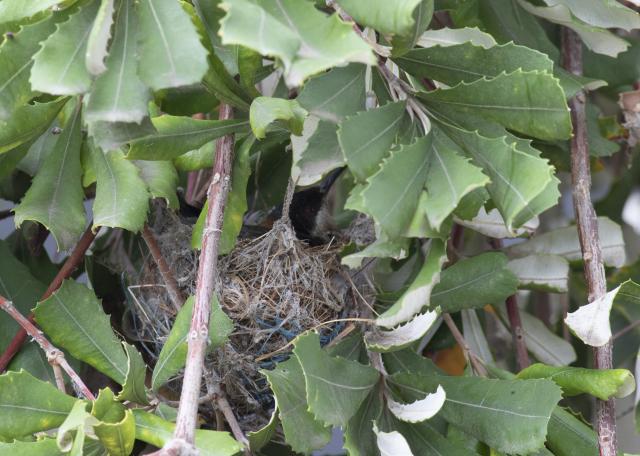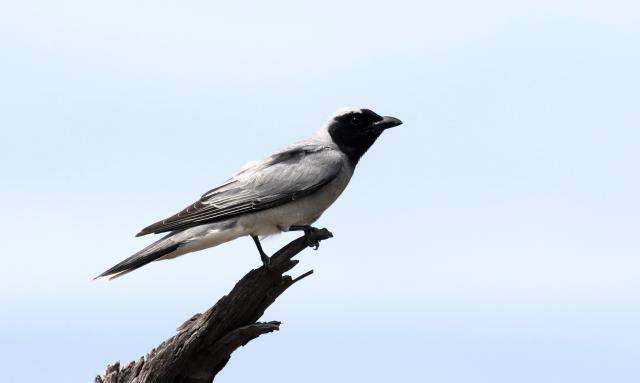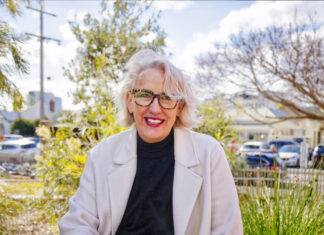I’ve had a bit of time between work to look at some birds.
I had a close encounter with a black-faced cuckoo-shrike in Marcus Hill, which was nice.
Cuckoo-shrikes are not cuckoos or shrikes, but are so called due to their plumage resembling cuckoos and the bill that looks like the bill of shrikes.
These birds have a black face and throat, and otherwise grey and white colouration. They are sometimes called colloquially as ‘shufflewings’ to describe how they move their wings when perching.
I visited my daughter in Anglesea one day and stopped on the way at the plant nursery in Bellbrae. I told the owner of the nursery that I was doing a bit of birdwatching at Anglesea and he showed me a nest that a bird had constructed in a banksia tree at the nursery. The bird was an eastern spinebill. It was lovely to check out the tiny nest which the owner told me contained three eggs. I must go back to see how the hatchlings fare in the busy nursery.
Anglesea heath was very quiet despite the cool and overcast weather, but I did see a few yellow-tailed black cockatoos and white-eared honeyeaters.
I did a few days of wardening for the Friends of the Bellarine Hooded Plovers. It was lovely to be back on the beach watching these plucky and brave birds try and protect their chicks.
Unfortunately, there were two hatchlings at 20W on the spit near the Barwon Heads bridge, but both chicks disappeared after a few days.
The hatchling at Point Lonsdale near 4W also disappeared due to kestrel predation. It’s so disappointing that there are many unleashed dogs on the beach despite many signs asking people not to have dogs on the beach during the day (from 9am to 7pm) and to have dogs on leads at all times. The good news is that one hatchling from Point Lonsdale has managed to fledge.
It was lovely to see a few sooty oystercatchers near 20W as well and good numbers of crested terns.
I received an email from Marianne, who walked around Blue Waters Lake in Ocean Grove early one morning and realised that the three fully grown cygnets had vacated the lake, but the parent birds were still present.
This may indicate that the parent birds may be preparing to nest again so have chased their offspring away. Marianne was wondering where the cygnets would go once they left Blue Waters Lake, and I was imagining they would congregate at Lake Connewarre or Swan Bay where there are healthy populations of black swans. Thanks Marianne for your email.
I walked around Blue Waters Lake myself on Saturday to conduct a Latham’s snipe survey and I was hoping to see a snipe at BWL as I know that Alan had seen one there a few weeks prior.
Alas there was no snipe, but many coots and ducks.









